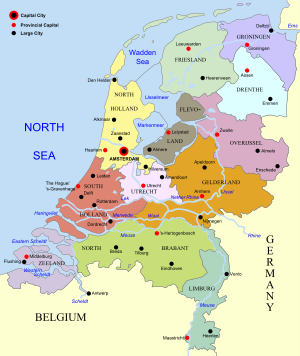
The Southeast Netherlands provides more than 100.000 jobs in the high-tech, automotive, and manufacturing industry and in high tech services. This portal connects you to international organizations with vacancies. Or your employment route may take you to one of the well-known international top technology companies or to one of the many much smaller innovation companies in the region. Both large and small, the prospects of a dynamic and rewarding working environment in Brainport are considerable.
Egalitarian approach in the Southeast Netherlands
The apparent egalitarian approach in the Netherlands fits very well with Dutch company structures, which have traditionally been amongst the flattest in Europe. Therefore, the Dutch manager will rarely take an authoritarian approach to the team, preferring to be seen as the colleague who has most influence rather than as the ultimate arbiter on all decisions. This does not mean that the boss is powerless; his or her influence and control are subtler than in some other countries. Equality between genders is encouraged, so women have the same opportunities in the workplace as men.
Working culture in the Southeast Netherlands
The way of working in the Netherlands differs from other countries. People are rather direct in their approach and communication. This also means that they are honest and have no hidden agendas. A brief, firm handshake, with good eye contact, is the normal business greeting. Verbal communication is expected to be fairly open and transparent. Although the official language in business is Dutch, most business people speak English, so it is not necessary to have correspondence translated. At companies where internationals are employed, the official language is English. Importance is placed on the efficient use of time and punctuality. Therefore, Dutch people find it important for their guests to be on time at meetings. Facts, statistics and other hard data greatly valued in dutch business. And, arguments based on rationality are preferred to those based on emotions.
Working practices in the Southeast Netherlands
Working practices in the Netherlands show that business hours are usually from 9 am to 5 pm. Lunch time is around 12 o’ clock and many people bring their own lunch. As opposed to southern countries, no alcohol is served during lunch time. Vacations are
normally taken during the months of July and August as well as late December. A relatively high proportion of Dutch people work parttime, especially women. This is often a deliberate choice, allowing employees to combine work with caring for their family.
Other practicalities concerning working in the Netherlands are:
an average of 25 to 35 days holiday, a legal right to a once-yearly payment of 8% holiday money (of yearly gross wages), a payment of 100% salary during illness (legal requirement is 70%) and a pension scheme at almost every company, partly paid by the employer. Wages in the Netherlands are among the highest in the world.
Although the official language in business life is Dutch, most business people speak English, so it is not necessary to have correspondence translated. At companies where internationals are employed, the official language is English. Importance is placed on the efficient use of time and punctuality. Therefore, Dutch people find it important for their guests to be on time at meetings. Facts, statistics and other hard data are greatly valued in Dutch business. And, arguments based on rationality are preferred to those based on emotions.
